Linking various states and cities across the map, the train stands as a marvel of human invention, igniting industrial revolutions and fostering the growth of numerous distant locales in its path. Beginning its charting of the Indian subcontinent during the early-1800s, the train first arrived in Vizag in 1893. John Castellas, a Vizag heritage enthusiast and aficionado, narrates the story of the first train the city ever saw and how the people rejoiced at its arrival.
“Iron Horse’ was an iconic everyday term popular in the mid-1800s for the railway steam locomotive. It is derived from the expressions used when horses powered machinery and horsepower was a measure of motive power. At about this time, railways had started to crisscross the Indian subcontinent. Bombay, Madras, Calcutta and Delhi were linked by rail. There was a noticeable gap between Calcutta and Madras yet to be linked. The terrain and bridging of the Godavari, Kistna and Mahanadi rivers posed a problem and steam ferries transported passengers across from the river banks.
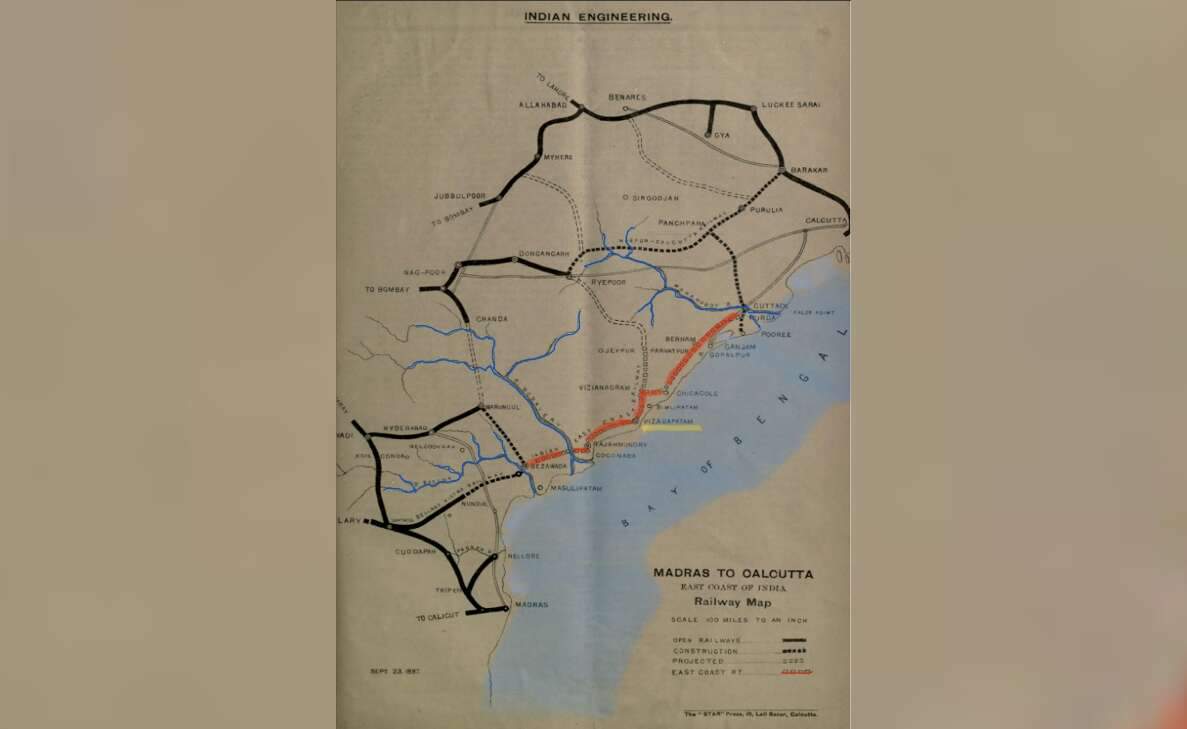
In the Madras Presidency, the bullock bandies were commonly used for the transportation of goods and people. In the many Telugu villages in South India, there was no word for this new sight. Steam trains were called a Poga Bandi (పొగ బండి, smoking carriage), or an Agni Bandi (అగ్ని బండి, fire carriage) and at the sight of the first railway locomotive, fear and rumour spread among the population. This led to hysteria as no one was sure what it was – a devil, a machine, a magical animal or some wizard that would capture their land. People hid as its hissing, puffing and whistling, its smoke, soot and smell, and its sheer size and weight were awe-inspiring. It was called an iron snake, a Shaitan (or Satan), coming to set fire to their villages, destroy their fields and kill their cattle.
The administration issued pamphlets in all towns and villages to describe the new steam locomotive and quell fear.
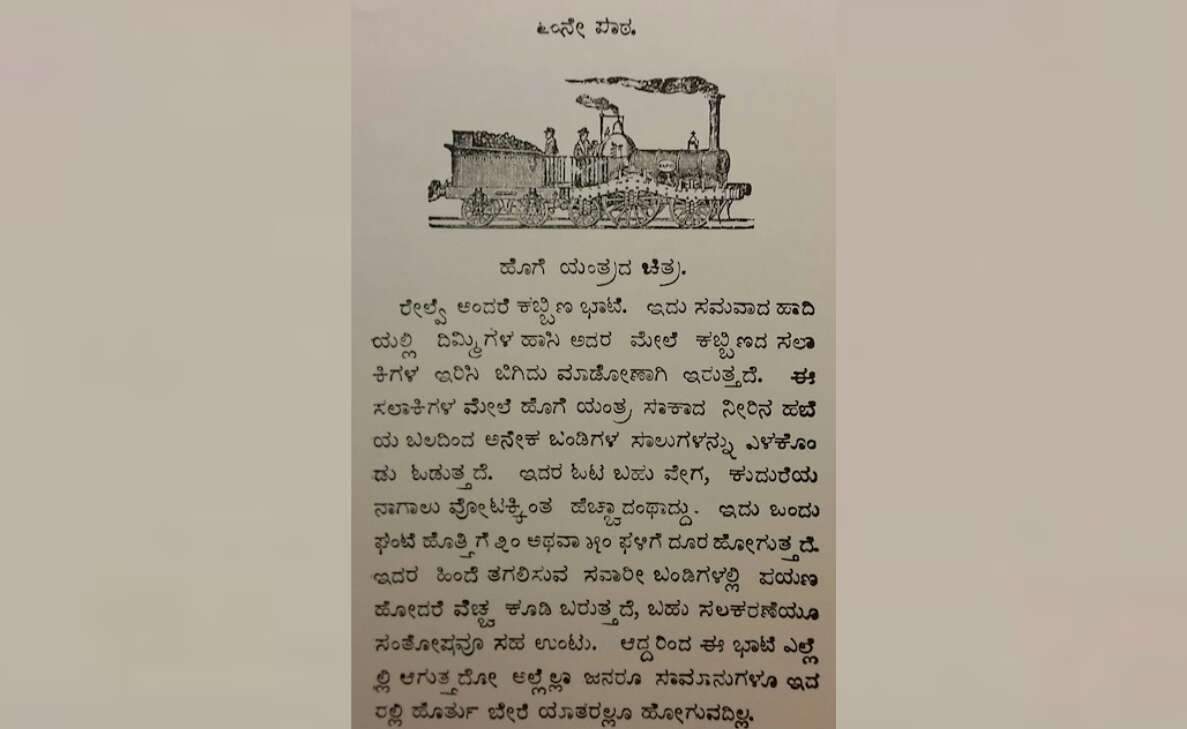
Translated, it reads “Railway means Iron Way. This consists of iron rods tied to beams laid on level ground. On these rods, the engine running with the power of boiling steam travels pulling a line of multiple carts. Its speed is very fast, more than a horse’s gallop. This will go 30-50 Ghalige*. Travelling in the carts attached behind it will save one money and also gives the joy of enjoying the various equipment. Wherever this way exists people and goods would only be transported in this way than by other means.
* Ghalige is an old South Indian measure of time, a day consisting of 60 Ghalige and a Ghalige equalling about 24 minutes. It is also the approximate time to travel between villages or temple towns. It was also the limit of time after which the engine needed to have its boiler tanks refilled with water and a load of wood or coal reloaded.
August 8, 1893, was the historic day when the first East Coast State Railway Company train to Vizagapatam arrived and Waltair Station was opened. The momentous occasion was celebrated with free train rides to the Anakpalle estate of Rajah Goday Gajapathi Rao and the town was treated to festivities at the Vizag Police Grounds.
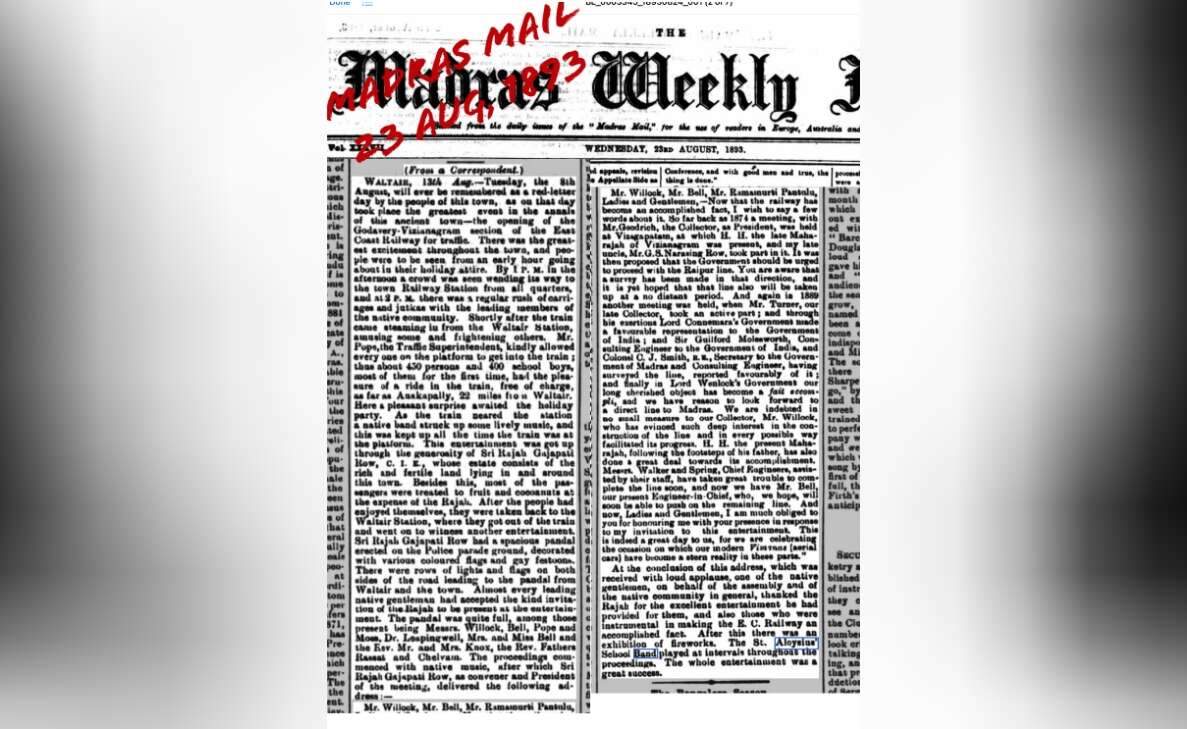
The East Coast State Railway Company was a government-guaranteed private company formed in 1890. Planning for the railway to connect Madras and Calcutta via Vizagapatam started in 1891 when Vizag’s population was 34,487. In 1901, the population grew to 40,892, occupying 7,741 houses, and the marked increase was largely due to the opening of the East Coast Railway. Vizagapatam proper was the principal residence of a majority of this population with European communities in Waltair. The state-owned East Coast Railway (ECR) was a standard gauge line (5 feet 6 inches) and ran from Royapuram (Madras) to Calcutta.
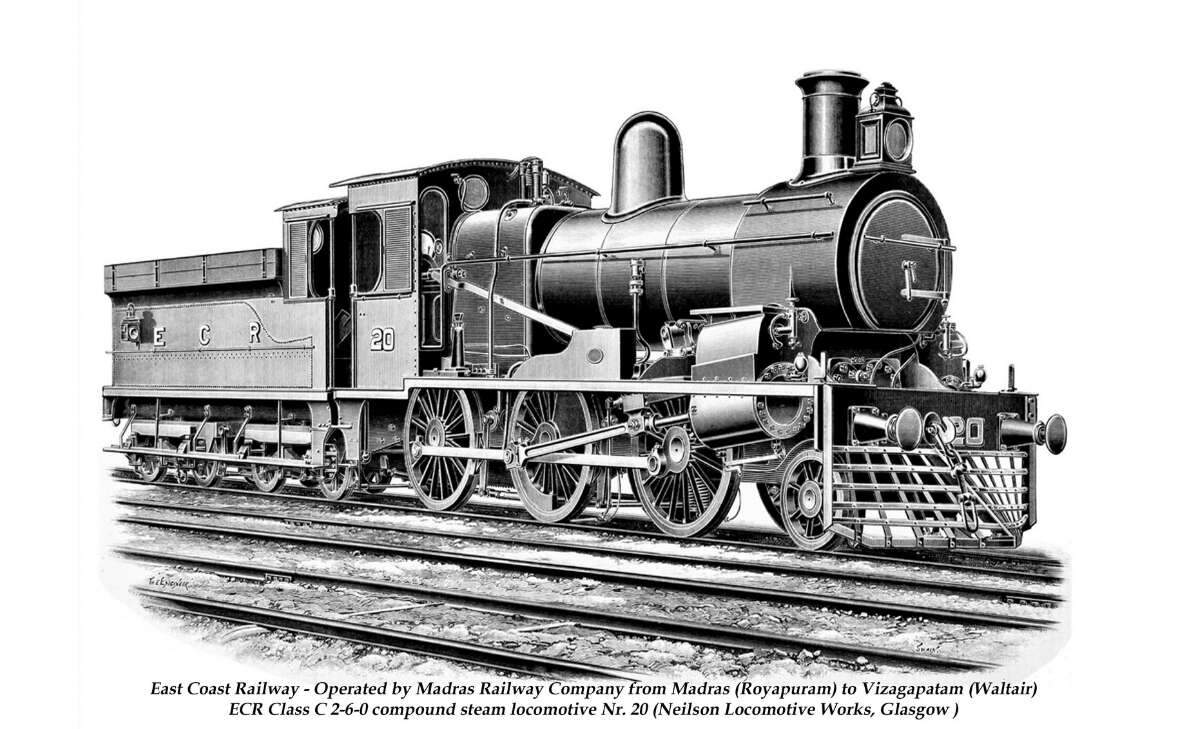
The arrival of the Iron Horse in Vizag also brought with it the Industrial Revolution. The Railu Bandi (రైలు బండి) became part of the local vocabulary and over the next 50 years, Vizag’s landscape was transformed with railways, roads, automobiles, steamers, the building of an inner harbour, electrification, shipbuilding, hospitals, schools, industry, Andhra University, the Indian Navy, an airport and a significant increase in the town’s population.
Should you have an anecdote or history on Vizag, the author would appreciate you contacting him at jcastell@ozemail.com.au
Written by John Castellas whose family belonged to Vizag for five generations. Educated at St Aloysius, migrated to Melbourne, Australia in 1966, former General Manager of Engineering at Boeing & Qantas Airways, in retirement Lecturers in Aviation Management at Swinburne University and is a Vizag aficionado.
Stay tuned to Yo! Vizag website and Instagram for more heritage stories.


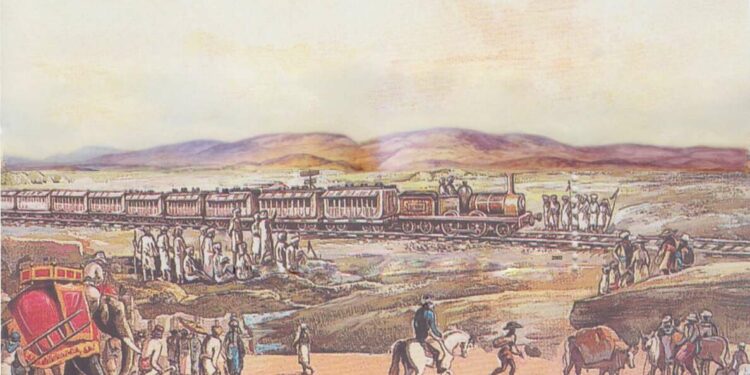







Discussion about this post